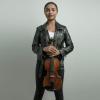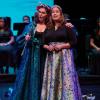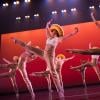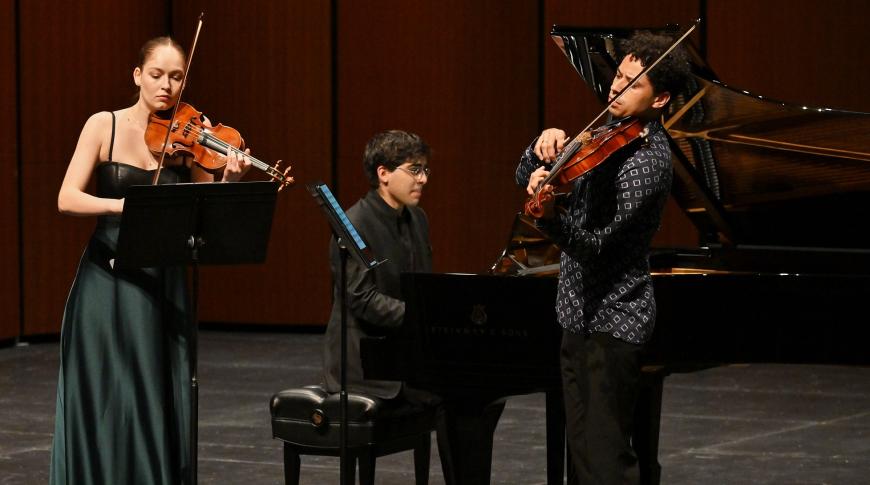
It’s abundantly clear from their June 1 recital at The Wallis that pianist Evren Ozel, violist Jordan Bak, and violinist Geneva Lewis are young, very talented, and enjoy playing with each other. The only problem is there’s practically no classical repertory for violin, viola, and piano. This makes programming very tricky. Their concert actually was more like a tag-team match. The only piece the musicians found to perform together was the Piano Trio No. 1 in B Minor by Max Reger (1873–1916), who is best known for his many compositions for organ.
As lead up, the trio performed a series of duets: Claude Debussy’s Violin Sonata (the most modern piece on the program); Robert Schumann’s Fantasiestücke, Op. 73; and Mozart’s Duo for Violin and Viola in G Major, K. 423.
Although she was born in New Zealand, Lewis is the only member who can claim an L.A. connection, having made her performing debut at the age of 11 with the Pasadena Symphony. Her bio, like her colleagues’, includes a long list of grants received, competitions won, and guest appearances made with significant ensembles like Orpheus Chamber Orchestra.
To begin the program, Lewis came onstage with Ozel, whose credits include a quarterfinal appearance at the 2021 International Chopin Competition in Warsaw. Like Bak, Ozel holds degrees from the New England Conservatory of Music. Since 2014, he has been a student of Wha Kyung Byun.
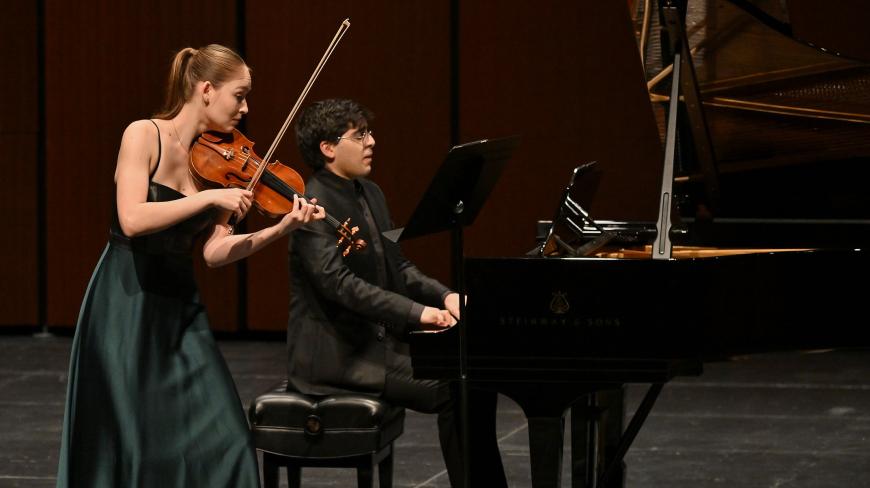
As a multiuse concert venue, The Wallis is well suited to chamber music. Its acoustic is bright but also mellow due to an abundance of wood paneling. And throughout the three movements of the Debussy sonata, Lewis and Ozel demonstrated a great deal of expressivity and cohesive coordination. Lewis’s tone was rich and full-bodied, her intonation precise and technique impressive. She was expertly accompanied by Ozel’s piano artistry.
Schumann’s Fantasiestücke, performed by Bak and Ozel in its composer-approved transcription, was much more compressed when performed on the viola rather than the clarinet. Bak nevertheless created a good deal of romantic ebb and flow, his instrument producing an amber-hued richness, again nicely accentuated by Ozel.
In the summer of 1783, Michael Haydn (the younger brother of Joseph) suffered from a protracted illness and was unable to complete a commission for six duos for violin and viola. As a favor, Mozart completed the final two duos, adding just the right amount of Haydn flavor for authenticity.
Lewis and Bak seemed to take a good deal of pleasure in the interweaving lines of the Duo, K. 423, with its dance-like partnering, lyrical slow movement, and lilting rondo. It was a very creditable performance of a work that has found its way into many a superstar’s repertory.
Although it is not a very consequential piece of music, at least Reger’s Piano Trio gave Lewis, Bak, and Ozel the chance to play together, and the effect was impressive. All they need now is a cellist, and the possibilities are endless.


